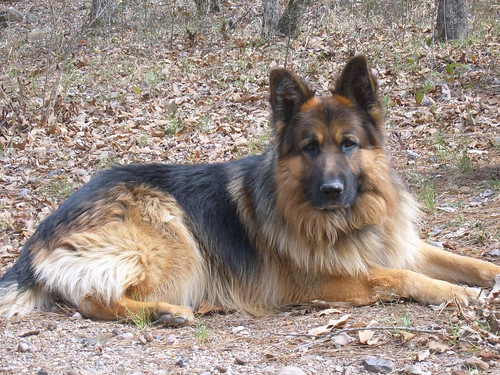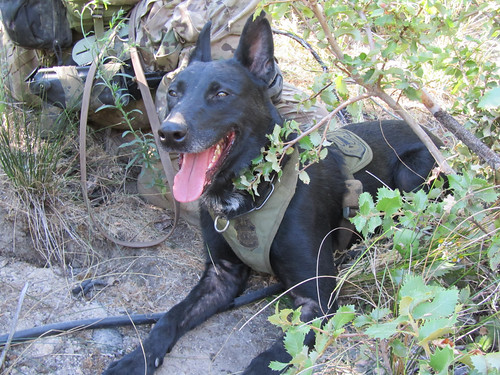
The recent tragedy involving U.S. Forest Service Law Enforcement Officer Jason Crisp and his K-9 Maros brought to light the close bond between an officer and his dog and the dangers they face.
Crisp and K-9 Maros were killed in the line of duty on March 12, 2014 in Burke County, North Carolina. The efforts of officers and K-9s are crucial to the mission of Forest Service law enforcement and a well-trained K-9 team is vital to the protection of people, property and resources on U.S. Forest Service-managed lands. Not only are the highly trained dogs involved in the apprehension of suspects and the detection of narcotics, but they also locate evidence, track individuals and provide community demonstrations.
“The presence and use of a K-9 often deters or changes the outcome of incidents which may very well save the life of officers or citizens involved,” said Chad Krogstad, patrol captain on the Shasta-Trinity National Forest. “When a K-9 is deployed to apprehend a suspect, the focus often gravitates toward the K-9 which in turn may save an officer’s life or prevent an injury.”
Forest Service law enforcement officers use both male and female Belgian Malinois and German Shepherds on its patrols and for counter narcotics work. Temperament, confidence and drive are some of the traits that handlers seek in potential K-9 dogs.
The dogs and their handlers typically undergo approximately three months of training together and will often remain as a team for the duration of the dog’s career, which lasts six to eight years. Most K-9s retire at eight to 10 years old and most handlers request to keep their dog after retirement. While K-9s are government property, policy allows them to be given to the handler through the proper agency guidelines.

“Just as with any dog, they have their own personality and loyalty to their handler that goes beyond just any old dog relationship,” said Krogstad, who’s K-9 is named Kevlar. “The time and effort devoted to training, and countless hours spent working together through the years - when you know he saved your bacon or made you look good - creates a bond. I can’t speak about this without tears running down my face, knowing my buddy who is 13 and retired 3½ years ago and has difficulty just getting around would still try to go to work if I asked him to.”
Certified narcotics K-9 units have played an important role in combating illegal drug activity in the nation’s forests. The K-9 teams, which regularly patrol the forests and respond to incidents, have been responsible for the arrest of hundreds of suspects possessing, distributing and/or manufacturing controlled substances. The arrests have also resulted in the seizure of thousands of pounds of narcotics, keeping millions of dollars’ worth of illegal drugs off the streets. When a K-9 is used in operations involving marijuana raids, search warrants or arrest warrants, or even when being used in demonstrations, the handler ensures the K-9 is identified by the agency shield and as a police officer.
“A successful K-9 team is a major asset not only to the agency, but to other law enforcement agencies and to the citizens affected by criminal activity near or around Forest Service lands,” said Krogstad.

